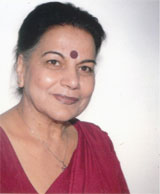You are here
Speaker Profile: Dr Swadesh M Rana
 >A Senior Fellow at the World Policy Institute in New York and the UN Representative of the Academic Council of the UN System, Swadesh M Rana is the former Chief of the Conventional Arms Branch at the Department of Disarmament Affairs at the United Nations. Her position paper on “Small Arms and Intra-State Conflicts” at the UN Institute for Disarmament Research resulted in launching the UN process of curbing illicit global transactions on small arms. She designed the Gramsh Pilot Project for Albania, the UN’s first ever undertaking to offer community development incentives for the recovery of wrongfully acquired weapons. During her two decades career at the United Nations, she directed research for the groups of inter-governmental experts appointed by the Secretary-General on issues ripening for the conventional disarmament agenda, was a member of the Executive Office of the Secretary General Boutros Boutros Ghali, was selected as the Senior Political Aide to the Chief of UNPROFOR to brief the army on the political aspects of the operation and served as the focal point for CASA. She has worked for system wide coordination of activities on small arms with member-states as they build consensus for launching new initiatives. She is currently an international visiting Fellow at the IDSA to write a policy oriented monograph on “Non-State Actors and South Asia: Developing a Regional Frame of Reference.”
>A Senior Fellow at the World Policy Institute in New York and the UN Representative of the Academic Council of the UN System, Swadesh M Rana is the former Chief of the Conventional Arms Branch at the Department of Disarmament Affairs at the United Nations. Her position paper on “Small Arms and Intra-State Conflicts” at the UN Institute for Disarmament Research resulted in launching the UN process of curbing illicit global transactions on small arms. She designed the Gramsh Pilot Project for Albania, the UN’s first ever undertaking to offer community development incentives for the recovery of wrongfully acquired weapons. During her two decades career at the United Nations, she directed research for the groups of inter-governmental experts appointed by the Secretary-General on issues ripening for the conventional disarmament agenda, was a member of the Executive Office of the Secretary General Boutros Boutros Ghali, was selected as the Senior Political Aide to the Chief of UNPROFOR to brief the army on the political aspects of the operation and served as the focal point for CASA. She has worked for system wide coordination of activities on small arms with member-states as they build consensus for launching new initiatives. She is currently an international visiting Fellow at the IDSA to write a policy oriented monograph on “Non-State Actors and South Asia: Developing a Regional Frame of Reference.”
ABSTRACT
A regional framework for non-state actors in South Asia
Accounting for nearly one sixth of current estimates for a global tally of violent non-state actors, South Asia has no available framework for dealing with them. The possibilities of developing such a framework are faced with two equally obvious ground realities. At a declaratory level, there is a hitherto non-existent unanimity among the current political regimes to acknowledge that non-state actors pose a shared threat to the region. In putting together a functioning mechanism to meet the threat, there are some familiar and fresh hurdles. There is a long-standing unresolved Indo-Pak impasse over state sponsorship of trans boundary acts of terror. There is a tacit reservation over the SAARC’s institutional capacity to monitor and nurture compliance with its declaratory pronouncements on behalf of the region. Then there is a fast growing intellectual unrest over the definitional ambiguity of the term non-state actors in its application to the specific situation in South Asia. Not easy to overcome singly, these hurdles get all the more daunting in combination with the inconclusive outcome and inevitable, if not imminent, withdrawal of post 9/11US military umbrella over South West Asia. Between then and now lies a window of opportunity to plan a regional framework that works around these hurdles. To by pass them would be impractical, to overcome difficult and to ignore them would be self- defeating for the national security concerns of any South Asian country. If 2020 is a chosen time frame for a plan of action, then it may call for a baseline to start the process, a test case to ascertain its viability and a course correction to meet the changing ground reality. The baseline is here already.
